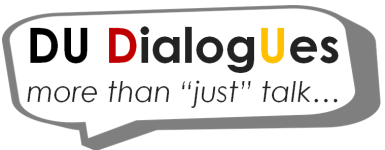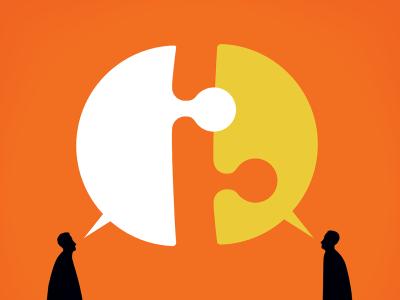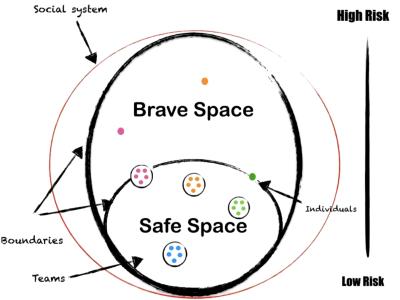Having Difficult Conversations
Authored & Created by SJE & DU DialogUes
Community + Values believes that our work as a community is best carried through deep and authentic partnerships with people and organizations across campus. One of these phenomenal partners is SJE & DU DialogUes. Through their efforts, this page presents how to share, create, and connect with others for difficult conversations.
_
Edutopia: Showing Up for Conversations About Social Justice
This video is a conversation between students and their teacher discussing the important tenets of social justice. They dive into understanding their privilege, minoritized identities, and their roles in creating change for their community. Students were able to reflect on how they can incorporate the conversations into their daily lives.
Questions:
- Why is important to create space for conversations with young people?
- How can a conversation like this build community and trust?
- Why should conversations about social justice be and include individuals with privilege?
-
Brené Brown on Empathy
Acclaimed researcher and author Brene Brown concisely and warmly distinguishes between empathy and sympathy and describes how to respond with genuineness in the face of stressful conversations.
Questions:
- What are the dangers of "silver lining” hardships that others share with us in conversation?
- Which quality of empathy do you believe is most important to utilize when navigating difficult discussions?
-
The Danger of a Single Story | Chimamanda Ngozi Adichie
Acclaimed Nigerian author and speaker Chimamanda Ngozi Adichie speaks in her 2009 Ted Talk about the negative impacts of stereotyping, discrimination, and what she calls the “single story”. In this talk, Adichie speaks to her own experience migrating to the United States for college and connects to her experiences living in Nigeria.
Questions:
- What does Adichie mean when she talks about the single story?
- How can we build awareness around our implicit biases that lead to single stories?
- How do media and other sources of information play a role in depicting a single story?
-
Taking the Stress out of Stressful Conversations
Holly Weeks, HBR
Stressful conversations are never easy, but we can all fare better if we prepare for them by developing greater awareness of our vulnerabilities and better techniques for handling ourselves. The advice and tools described in this article can be helpful in unilaterally reducing the strain in stressful conversations.
Questions:
- Reflect on a time when you experienced an emotional or physical response while participating in a stressful conversation. How did you react when those feelings emerged?
- Think of a stressful conversation you may be avoiding in your life right now – which approaches would you consider using after reading this article?
- Think back on a time when a friend, family member, colleague, or stranger responded to a stressful conversation constructively. What was their approach and why did you appreciate it?
-
How to Have Difficult Conversations
Dan Mager, MSW, Psychology Today
Every element of a difficult conversation has the potential to give us anxiety: contemplating the conversation before it even arrives, the conversation itself, and the consequences following the conversation are all anxiety producing scenarios. However, learning how to prepare for such conversations can decrease our anxiety and increase the likelihood of the conversation going productively.
Questions:
- Which preparation skill do you feel already confident in? Which skill would you like to work on?
- Are some conversations inherently harder to prepare for than others, or does it depend? Why?
-
From Safe Spaces to Brave Spaces
Brian Arao & Kristi Clemens, The Art of Effective Facilitation
This book chapter, taken from The Art of Effective Facilitation, challenges the notion of creating “safe spaces” for social justice education, and encourages facilitators and educators to strive toward creating “brave spaces.” The catalyst for this transition was the disconnect that students and participants felt between what they believed to be “safe” and how social justice conversations actually occurred. Alternatively, the term “brave” touches on the challenges and risk that is inherently built into conversations about race, identity, power and/or privilege. The authors provide a case study to exemplify their argument and propose suggestions for reframing these conversations to be more productive and promote greater authenticity among participants.
Questions:
- This article encourages facilitators and participants to “challenge by choice.” That is, individuals can choose to what extent they participate in the conversation. With this in mind, consider the following question: what may be limiting you from challenging yourself to share, explore, or understand while discussing with others?
- How does your response to the previous question help you conceptualize the term “brave?"
* Image Sourced from InfoQ







